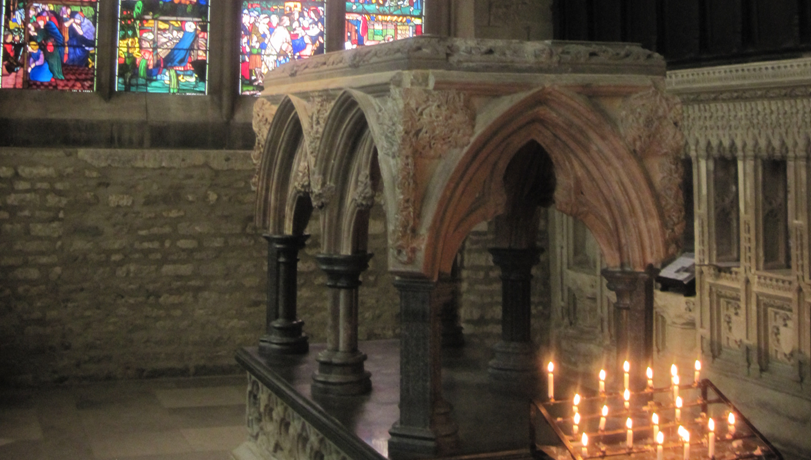Medieval manuscript showing pilgrims at St. Edward's shrine.
St. Edward lived from about 1005 to 1066 and was the last great Saxon King. He was the son of Ethelred Unread and Emma of Normandy distantly relating him to Duke William of Normandy. Growing up in the disruption of his father's turbulent reign and enduring the last stretch of viking attacks with the occupation by King Canute of Denmark, Edward grew up to be very faithful in belief and in his actions as king. He endowed and rebuilt an abbey at what was then called Thorny Island and called the church the "West Minster" because it was west of London. There are several miracles associated with Edward, the most famous being that he came across a beggar out side a church dedicated to St. John the Evangelist, Edward presented his ring to him after he asked for alms. Yet later the ring was presented back to some pilgrims traveling in the Holy Land by a man claiming to be St. John. The man asked them to return the ring to Edward and to tell him that they would be meeting in 6-months time. Edward died 6 months later on January 5, 1066. He was buried in his church at Westminster where his relics remain enshrined in the medieval tomb.
St. Edward the Confessor reminds us, along with other pious kings such as St. Louis or St. Henry II, that no matter how well known we are, how high profile our lives or jobs may be it is important that we outwardly confess our faith just as much as we inwardly practice it. These kings lived in a society where a pious leader was admired, but their positions also tested their faith. We now live in a time where it can be, in some cases, 'unpopular' to be openly Christian, and that religion should be restrained to one's private life. But the Christian faith was not meant to be hidden or private, and it has certainly suffered times where it was 'unpopular' before. We must then, as St. Edward did, live our lives, both private and public, ever-mindful of Christ and our faith in him.


No comments:
Post a Comment